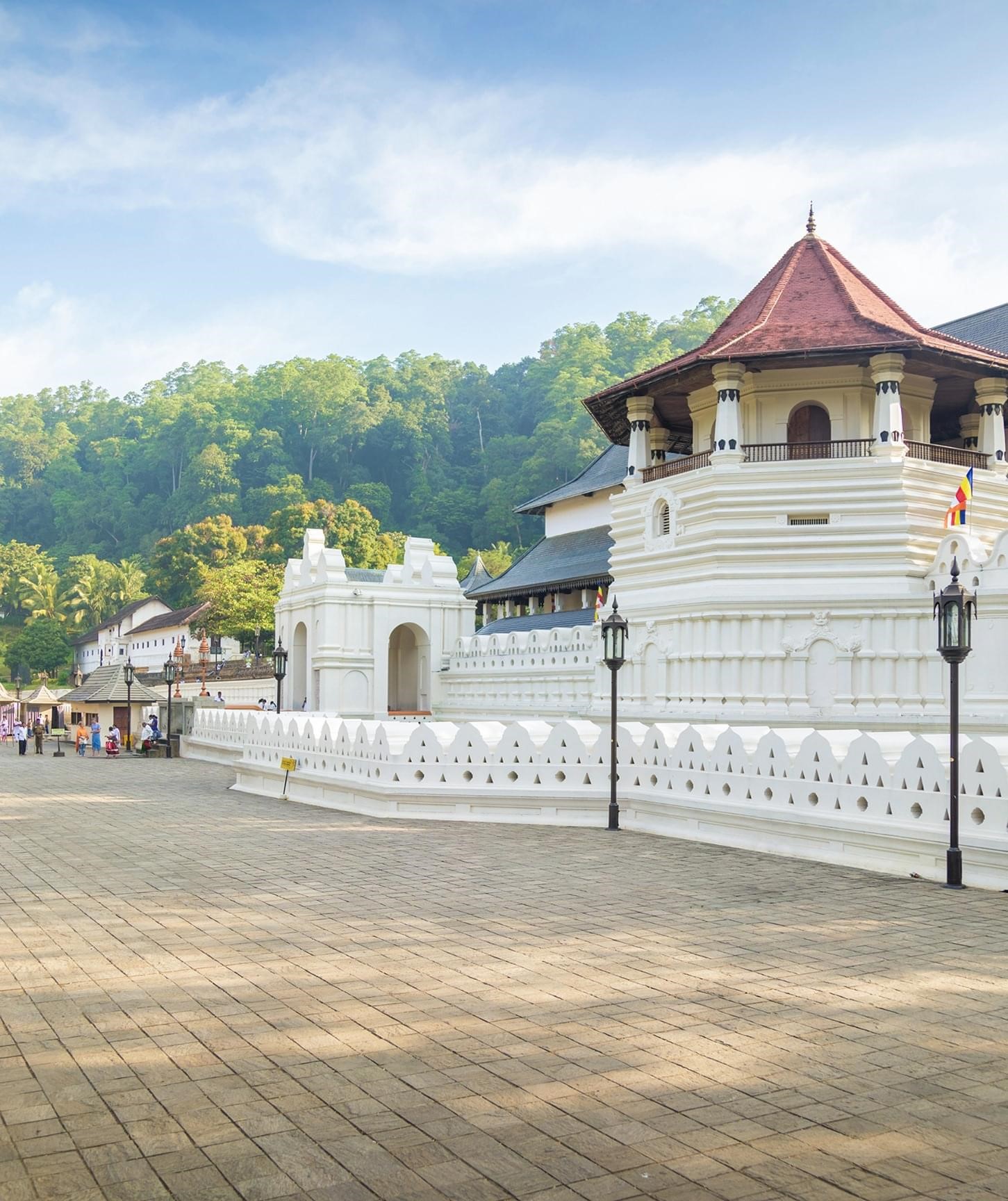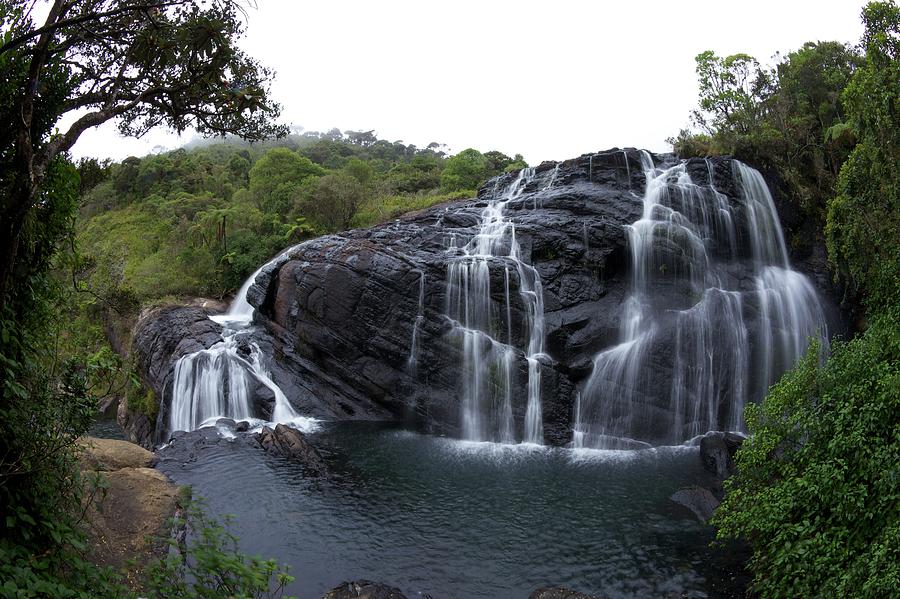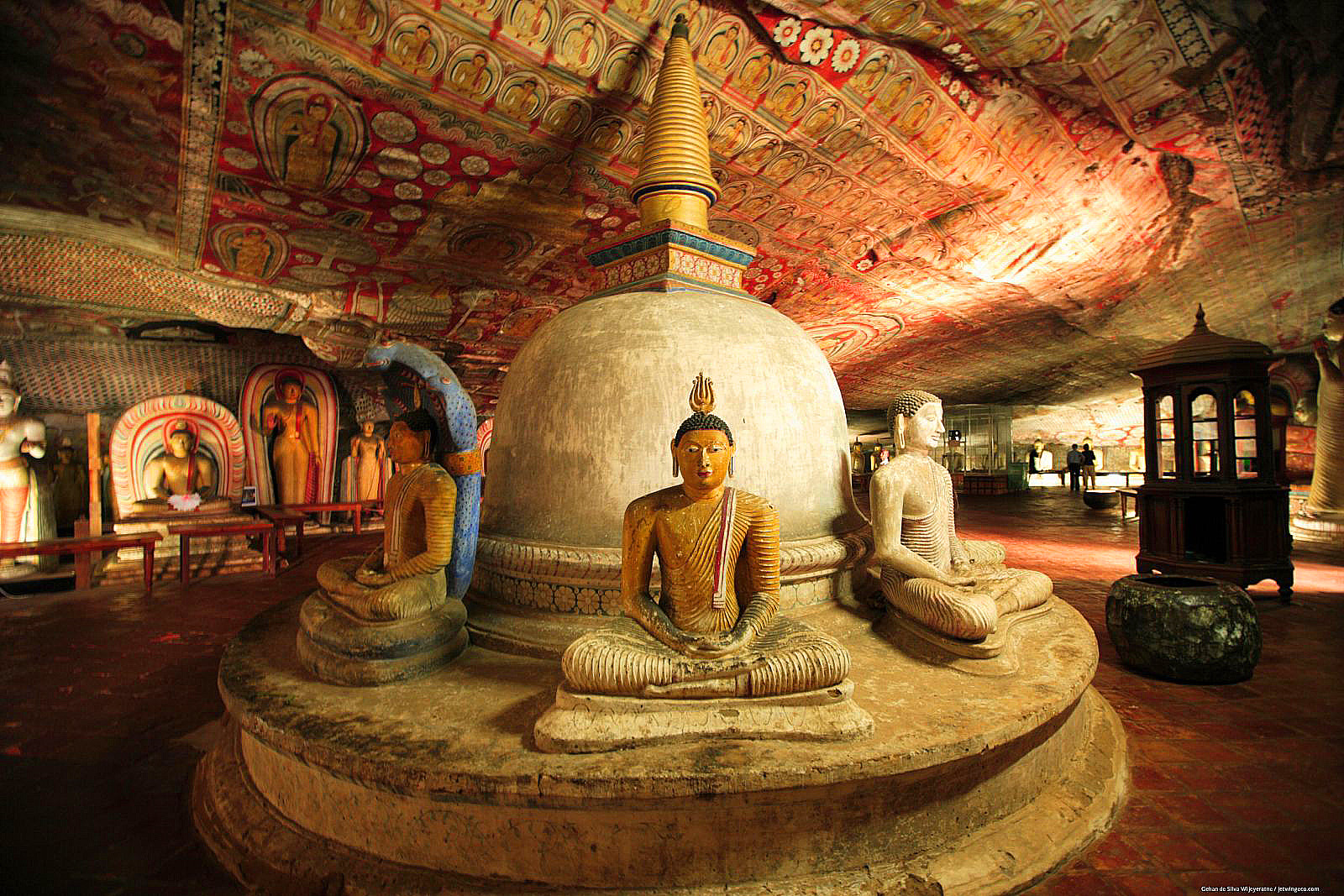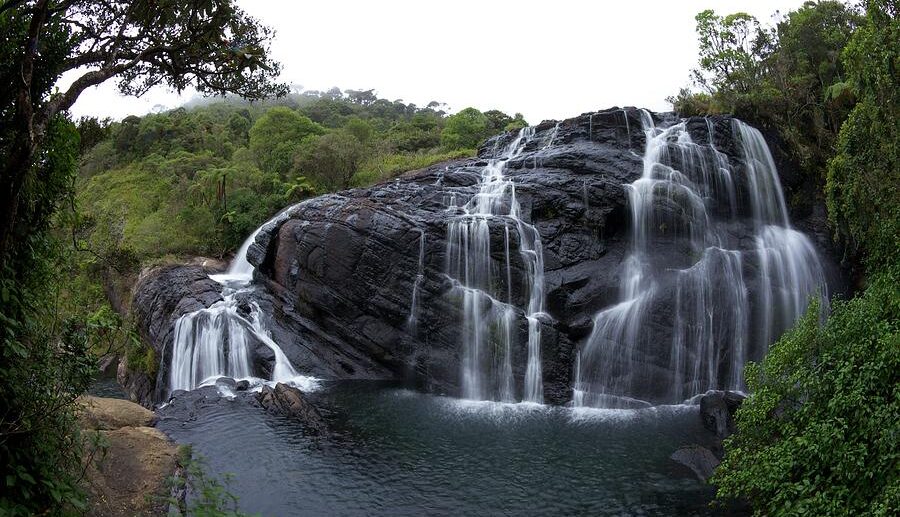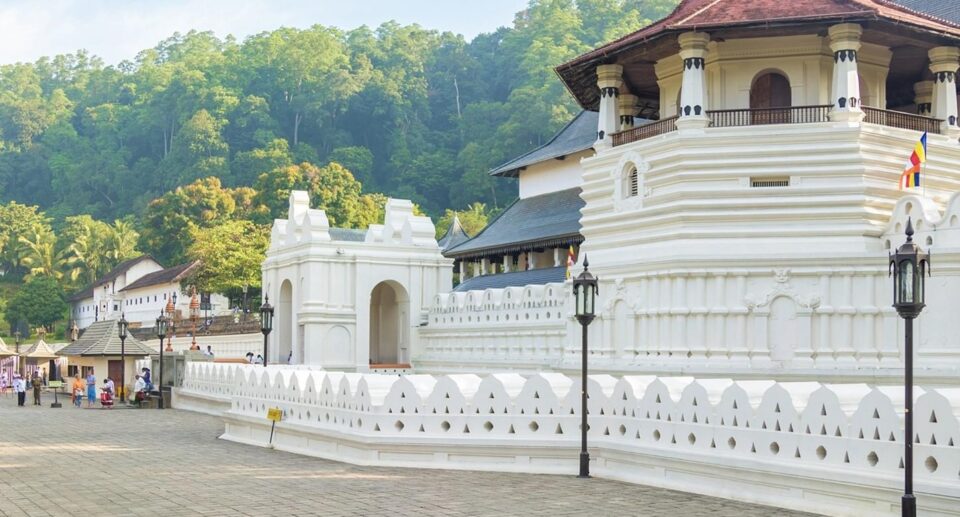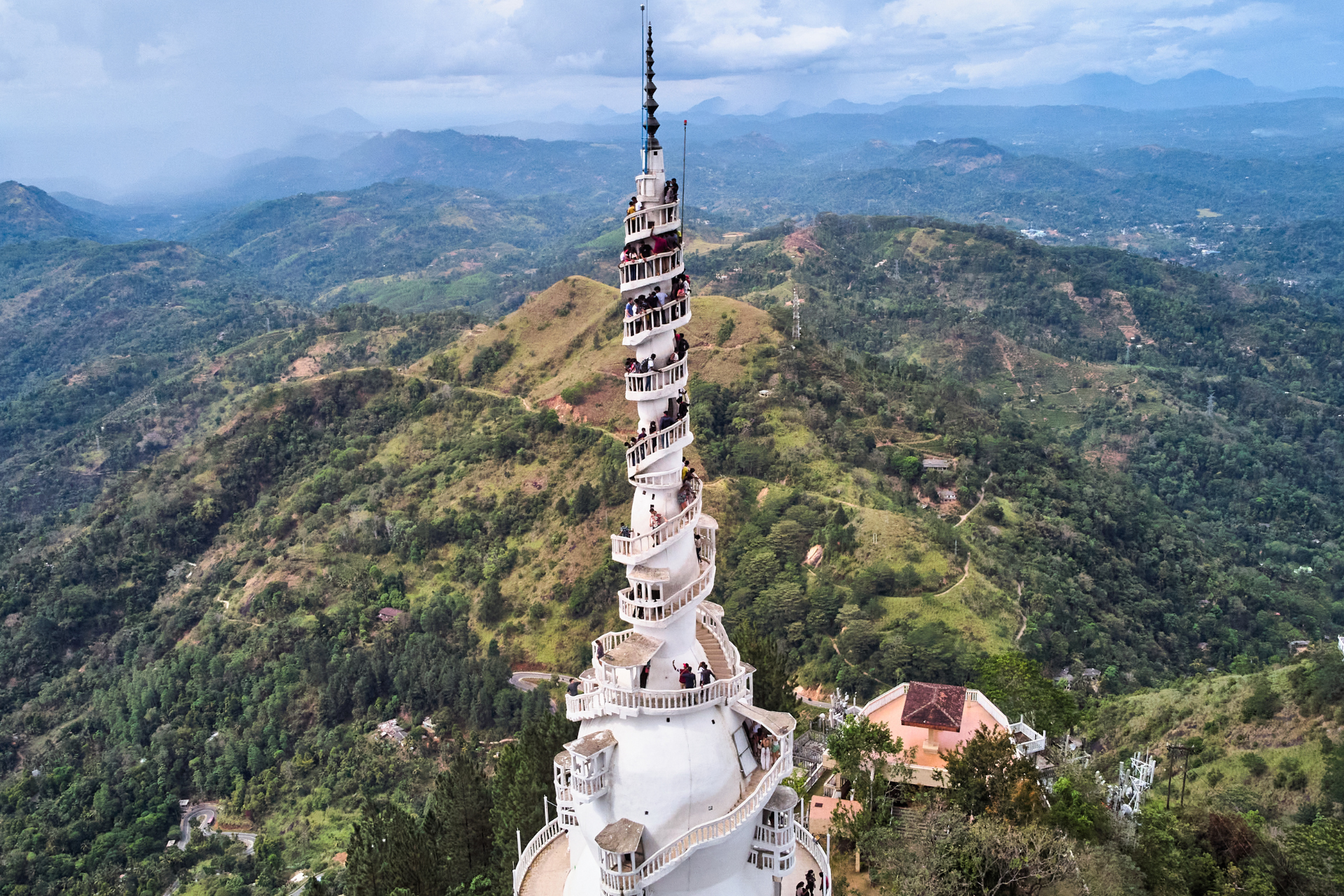Exploring the Aluvihare Temple: A Journey into Sri Lanka’s Ancient History
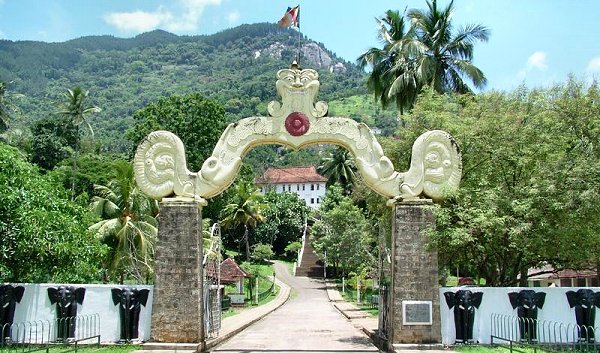
Aluvihare Rock Temple is a Buddhist temple located in Aluvihare, Matale District of Sri Lanka. The Aluvihara cave temple is located 30 km north of Kandy on the Matale-Dambulla road, situated amidst hills. History of this Aluvihare Rock Temple dates back to the 3rd Century B.C. during the reign of King Devanampiyatissa. It is believed that the King built the dagoba, planted the Bo sapling and founded the temple after the introduction of Buddhism to the country during his reign.
Aluvihare Rock Temple was the historic location where the Pali Canon was first written down completely in text on ola leaves. Many monastery caves, some of which exhibit frescoes are situated near this temple.
History and significance
In the 1st Century BC, during the reign of King Walagamba, Sri Lanka underwent a famine called ‘Baminithiyasaya’ for 12 years. There was also a South Indian invasion at the same time, and the Buddhist monks of the time realized that these issues would put the existence of the Buddha Sasana in the country in danger. Under these circumstances, memorizing and reciting the Dhamma was difficult. Due to the famine, the Buddhist monks have not received proper alms and therefore have to undergo a lot of hardships, and the yams, roots, and leaves of trees are their means of sustenance. Malaya Rata, described as the hilly portion of the country, received about 60 of them together. With some difficulty, they somehow made it to the banks of the Mahaweli river, where they survived for 12 years until the famine subsided. King Walagamba took the crown once more 14 years later, defeating the invaders who had taken over his throne as part of the rebellion following his defeat in the invasion from South India.
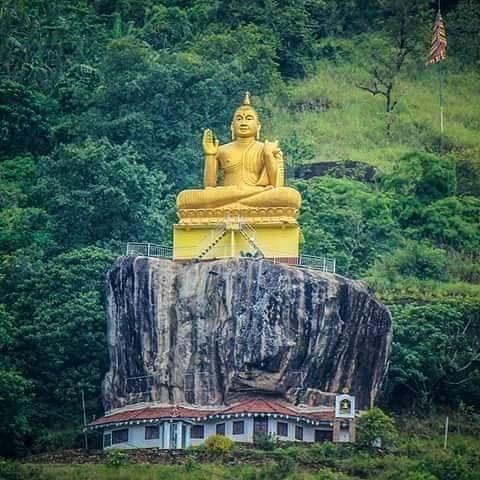
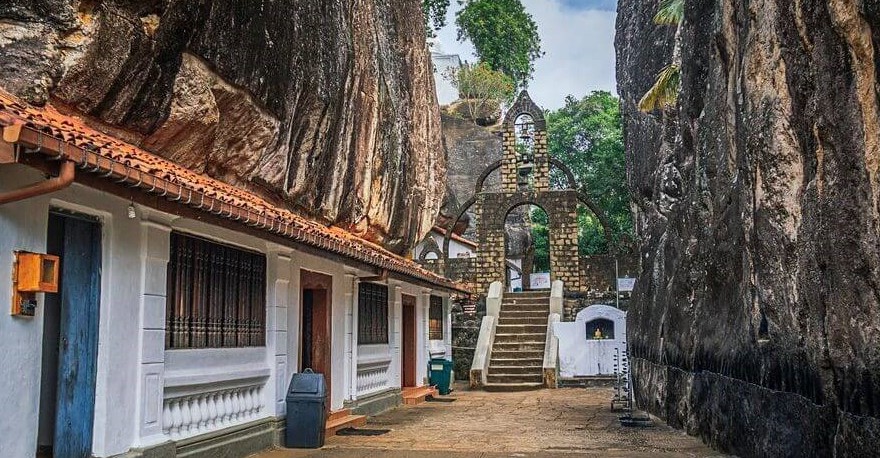
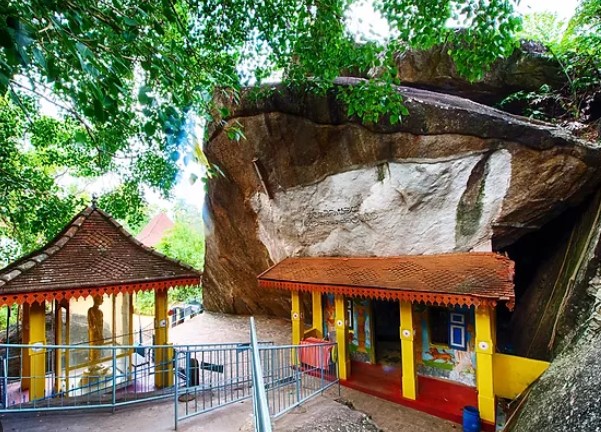
The monks who left to India and to the hilly areas of Sri Lanka, during the difficult period returned to Anuradhapura and decided to transcribe the Tripiṭaka (philosophical doctrines of Buddhism) for preservation and for the use of future generations. The monks selected Aluvihare Rock temple in Matale as the most suitable and secured place to carry out this important event. This transcription was done out of fear that the doctrine would be lost in the turmoil caused by repeated South Indian invasions.[citation needed] It is said that 500 scholarly monks assembled at Aluvihare Rock temple to undertake the tedious task of first reciting the doctrines and reaching an agreed version before transcribing them. The whole transcription was done on ola leaves books called puskola poth locally. They were made of broad strips cut from the leaves of either the palmyra or talipot palm; the doctrines were inscribed in Pali language. The characters were incised on the ola leaves with a metal stylus.
The ancient library at Aluvihara Rock Temple, which, after many centuries, had preserved the volumes of these copied manuscripts, was completely destroyed in the Matale Rebellion of 1848. Numerous parts of this temple were demolished by that incident. Evidence to the day of the consequences of this disaster was apparently visible at the premises of that temple. The few generations of monks that followed had to transcribe the Tripiṭaka again. Recompilation and transcription took a long period of time, as only a few monks were involved in this painstaking task, with the first of the three “baskets of the law” completed only in 1982.
There are many caves with ancient inscriptions in Aluvihare Rock temple. Of the caves enclosed with comparatively modern wall and ceiling paintings of interest, impressive statues, and images of Buddha are a large reclining statue of the Buddha together with standing and seated images on the main cave of these. In the entrance-way of another cave with a reclining statue of the Buddha, there are terrifying depictions of the hellish afterlife awaiting those who commit sins. One cave is devoted to the great Indian monk-scholar Buddhagosa, who is considered as the greatest exponent and interpreter of the Pali canonical scriptures. He lived in Anuradhapura in the 4th and 5th centuries and is believed to have spent many years at the Matale Alu Viharaya to pursue his scholarly work.
There are several folklores and beliefs associated with the name Alu Vihara. Some say that this term Aloka Vihara, meaning the temple of light, later became Aluvihara as the pali word Aloka was referred to as Alu, meaning light in ancient Sinhalese, because it was a residential place for Buddhist monks, it was called a Viharaya. The two words have thus been combined to make the term Aluvihara. Another view is that, though situated in a rock cave, with a huge rock in the east sunlight is not covered and disturbed by the rock. Therefore, it is known as the Aloka lena.But all these views, beliefs give the conclusion that the name of this temple is related to light.
Why is Aluvihare Rock Temple Important?
Aluvihare Rock Temple holds immense significance both spiritually and historically. As a place where the oral teachings of Buddha were committed to writing, it represents a pivotal moment in the preservation of the Theravada Buddhist tradition. This was a monumental task, ensuring that the dhamma, or teachings, would endure through the ages in their most authentic form, less vulnerable to distortion that can come from oral transmission.
The temple is also important for its role in Sri Lankan culture, symbolizing a place of education, a refuge in times of crisis, and a bastion of spiritual heritage. In a broader sense, Aluvihare is a potent symbol of the island’s enduring commitment to preserving its religious and cultural history, despite the multiple challenges it has faced over centuries. Can you imagine the countless generations of devotees who have walked these paths, seeking wisdom and solace?
Moreover, its architecture, murals, and statues offer a profound glimpse into the artistic traditions that flourished under the patronage of Buddhism in Sri Lanka. The temple provides insights into the spiritual and artistic ingenuity of the past, with various details and symbols that tell tales of devotion, enlightenment, and the deep roots of the Dhamma in Sri Lankan soil.
Things to Do & See at Aluvihare Rock Temple
Visiting Aluvihare Rock Temple is a journey that engages both the soul and the senses. Start by exploring the series of rock caves that have been converted into shrine rooms. There, you will encounter stunning murals depicting stories from the Buddha’s life, some of which date back centuries and reflect Buddhist cosmology and teachings on karma and rebirth. The vivid colors and artistic detail can be mesmerizing, so much that they often seem to come alive with devout history.
Climb the rock to reach the stupa at its summit for a panoramic view of the surrounding hills — a truly apt place for contemplation and reflection. Take a moment to soak in the tranquility and reflect on the natural beauty that has inspired spirituality for millennia.
Another draw is the collection of sacred relics, including a revered footprint believed to have been left by the Buddha himself. Engage with the monks who may share stories or teach you about their life and practices, and participate in a meditation session if the opportunity presents itself. Remember to explore the Dharmasala or ‘Hall of Ola leaves,’ where the sacred texts were written down, and if time permits, the Aluvihare Rock Temple Museum, which houses ancient manuscripts and artifacts.
How do I get to Aluvihare Rock Temple?
Aluvihare Rock Temple is situated in Matale, close to Kandy. Visitors can take a bus or hire a taxi from Kandy to reach the temple. The trip typically takes around one hour.
What can I see at Aluvihare Rock Temple?
Visitors to Aluvihare Rock Temple can explore the rock caves housing Buddhist statues and murals that illustrate different events in the life of Buddha and the history of Buddhism. There is also a stupa and a museum containing ancient relics.
What can I see at Aluvihare Rock Temple?
Visitors to Aluvihare Rock Temple can explore the rock caves housing Buddhist statues and murals that illustrate different events in the life of Buddha and the history of Buddhism. There is also a stupa and a museum containing ancient relics.
Is there an entrance fee for Aluvihare Rock Temple?
Yes, there is typically an entrance fee for tourists visiting Aluvihare Rock Temple. The fee helps in the maintenance and conservation of the temple. It is advisable to check the latest fee and opening hours before visiting.
Are there any festivals or special events at Aluvihare Rock Temple?
Aluvihare Rock Temple may host special events and religious ceremonies, particularly during significant Buddhist festivals such as Vesak Poya (Buddha Day) and Poson Poya (celebrating the introduction of Buddhism to Sri Lanka). These occasions often include colorful decorations and various rituals.
You can visit this charming destination with ease as you travel in the island. Be sure to read as much as you can about the history of this temple before you visit it so you will be able to enjoy a meaningful experience!

